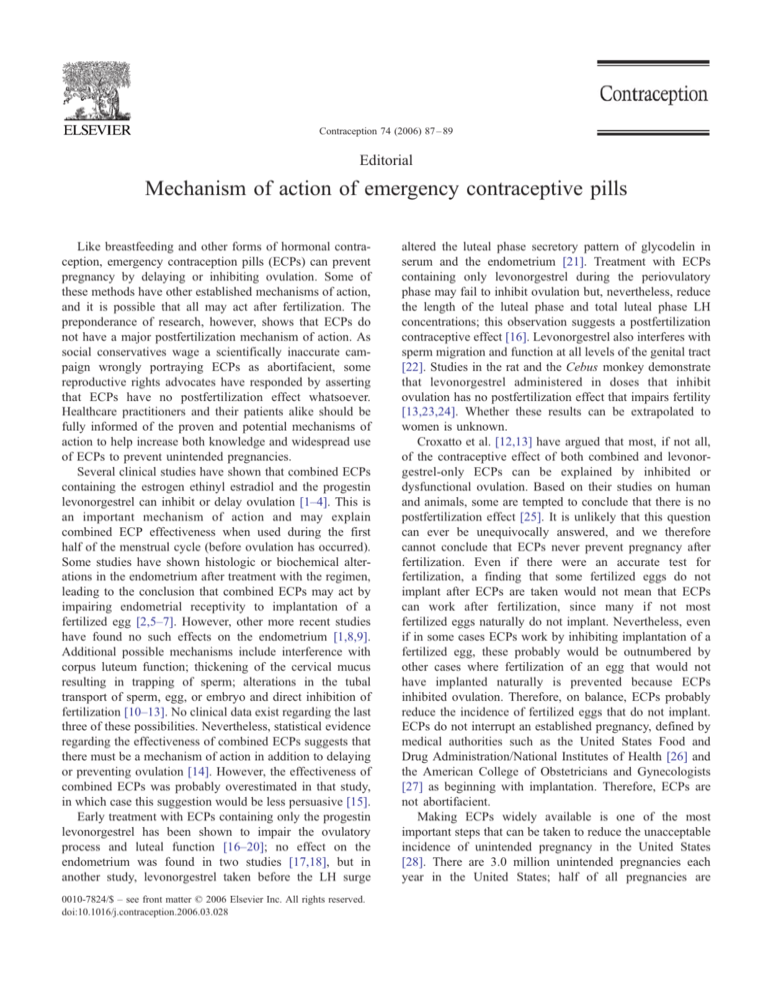
Contraception 74 (2006) 87 – 89
Editorial
Mechanism of action of emergency contraceptive pills
Like breastfeeding and other forms of hormonal contraception, emergency contraception pills (ECPs) can prevent
pregnancy by delaying or inhibiting ovulation. Some of
these methods have other established mechanisms of action,
and it is possible that all may act after fertilization. The
preponderance of research, however, shows that ECPs do
not have a major postfertilization mechanism of action. As
social conservatives wage a scientifically inaccurate campaign wrongly portraying ECPs as abortifacient, some
reproductive rights advocates have responded by asserting
that ECPs have no postfertilization effect whatsoever.
Healthcare practitioners and their patients alike should be
fully informed of the proven and potential mechanisms of
action to help increase both knowledge and widespread use
of ECPs to prevent unintended pregnancies.
Several clinical studies have shown that combined ECPs
containing the estrogen ethinyl estradiol and the progestin
levonorgestrel can inhibit or delay ovulation [1–4]. This is
an important mechanism of action and may explain
combined ECP effectiveness when used during the first
half of the menstrual cycle (before ovulation has occurred).
Some studies have shown histologic or biochemical alterations in the endometrium after treatment with the regimen,
leading to the conclusion that combined ECPs may act by
impairing endometrial receptivity to implantation of a
fertilized egg [2,5–7]. However, other more recent studies
have found no such effects on the endometrium [1,8,9].
Additional possible mechanisms include interference with
corpus luteum function; thickening of the cervical mucus
resulting in trapping of sperm; alterations in the tubal
transport of sperm, egg, or embryo and direct inhibition of
fertilization [10–13]. No clinical data exist regarding the last
three of these possibilities. Nevertheless, statistical evidence
regarding the effectiveness of combined ECPs suggests that
there must be a mechanism of action in addition to delaying
or preventing ovulation [14]. However, the effectiveness of
combined ECPs was probably overestimated in that study,
in which case this suggestion would be less persuasive [15].
Early treatment with ECPs containing only the progestin
levonorgestrel has been shown to impair the ovulatory
process and luteal function [16–20]; no effect on the
endometrium was found in two studies [17,18], but in
another study, levonorgestrel taken before the LH surge
0010-7824/$ – see front matter D 2006 Elsevier Inc. All rights reserved.
doi:10.1016/j.contraception.2006.03.028
altered the luteal phase secretory pattern of glycodelin in
serum and the endometrium [21]. Treatment with ECPs
containing only levonorgestrel during the periovulatory
phase may fail to inhibit ovulation but, nevertheless, reduce
the length of the luteal phase and total luteal phase LH
concentrations; this observation suggests a postfertilization
contraceptive effect [16]. Levonorgestrel also interferes with
sperm migration and function at all levels of the genital tract
[22]. Studies in the rat and the Cebus monkey demonstrate
that levonorgestrel administered in doses that inhibit
ovulation has no postfertilization effect that impairs fertility
[13,23,24]. Whether these results can be extrapolated to
women is unknown.
Croxatto et al. [12,13] have argued that most, if not all,
of the contraceptive effect of both combined and levonorgestrel-only ECPs can be explained by inhibited or
dysfunctional ovulation. Based on their studies on human
and animals, some are tempted to conclude that there is no
postfertilization effect [25]. It is unlikely that this question
can ever be unequivocally answered, and we therefore
cannot conclude that ECPs never prevent pregnancy after
fertilization. Even if there were an accurate test for
fertilization, a finding that some fertilized eggs do not
implant after ECPs are taken would not mean that ECPs
can work after fertilization, since many if not most
fertilized eggs naturally do not implant. Nevertheless, even
if in some cases ECPs work by inhibiting implantation of a
fertilized egg, these probably would be outnumbered by
other cases where fertilization of an egg that would not
have implanted naturally is prevented because ECPs
inhibited ovulation. Therefore, on balance, ECPs probably
reduce the incidence of fertilized eggs that do not implant.
ECPs do not interrupt an established pregnancy, defined by
medical authorities such as the United States Food and
Drug Administration/National Institutes of Health [26] and
the American College of Obstetricians and Gynecologists
[27] as beginning with implantation. Therefore, ECPs are
not abortifacient.
Making ECPs widely available is one of the most
important steps that can be taken to reduce the unacceptable
incidence of unintended pregnancy in the United States
[28]. There are 3.0 million unintended pregnancies each
year in the United States; half of all pregnancies are
88
Editorial / Contraception 74 (2006) 87 – 89
unintended, and half of all women aged 15–44 years have
had an unintended pregnancy [29,30]. Widespread use of
ECPs could halve the number of unintended pregnancies
and the consequent need for abortion [28]. Yet, only 6% of
women at risk of unintentional pregnancy in the United
States have ever used ECPs, primarily because awareness of
emergency contraception is so low [31]. To avail themselves
of this important contraceptive option, therefore, women
must be informed that ordinary birth control pills can be
taken in higher than usual doses after unprotected intercourse to prevent pregnancy. To make an informed choice,
women must know that ECPs — like all regular hormonal
contraceptives such as the birth control pill, the progestincontaining implant and the injectable depot medroxyprogesterone acetate [32], and even breastfeeding [33] — may
prevent pregnancy by delaying or inhibiting ovulation,
inhibiting fertilization, or inhibiting implantation of a
fertilized egg in the endometrium. This information is
provided on the Emergency Contraception Web site
(www.not-2-late.com) and the Emergency Contraception
Hotline (1-888-NOT-2-LATE).
James Trussell
Office of Population Research
Princeton University
Princeton, NJ 08544, USA
E-mail address: trussell@princeton.edu
Beth Jordan
Association of Reproductive Health Professionals
Washington, DC 20037, USA
References
[1] Swahn ML, Westlund P, Johannisson E, Bygdeman M. Effect of postcoital contraceptive methods on the endometrium and the menstrual
cycle. Acta Obstet Gynecol Scand 1996;75:738 – 44.
[2] Ling WY, Robichaud A, Zayid I, Wrixon W, MacLeod SC. Mode of
action of dl-norgestrel and ethinylestradiol combination in postcoital
contraception. Fertil Steril 1979;32:297 – 302.
[3] Rowlands S, Kubba AA, Guillebaud J, Bounds W. A possible
mechanism of action of danazol and an ethinylestradiol/norgestrel
combination used as postcoital contraceptive agents. Contraception
1986;33:539 – 45.
[4] Croxatto HB, Fuentalba B, Brache V, et al. Effects of the Yuzpe
regimen, given during the follicular phase, on ovarian function.
Contraception 2002;65:121 – 8.
[5] Kubba AA, White JO, Guillebaud J, Elder MG. The biochemistry of
human endometrium after two regimens of postcoital contraception: a
dl-norgestrel/ethinylestradiol combination or danazol. Fertil Steril
1986;45:512 – 6.
[6] Ling WY, Wrixon W, Zayid I, Acorn T, Popat R, Wilson E. Mode of
action of dl-norgestrel and ethinylestradiol combination in postcoital
contraception. II. Effect of postovulatory administration on ovarian
function and endometrium. Fertil Steril 1983;39:292 – 7.
[7] Yuzpe AA, Thurlow HJ, Ramzy I, Leyshon JI. Post coital
contraception — a pilot study. J Reprod Med 1974;13:53 – 8.
[8] Taskin O, Brown RW, Young DC, Poindexter AN, Wiehle RD. High
doses of oral contraceptives do not alter endometrial al and amb3
integrins in the late implantation window. Fertil Steril 1994;61:850 – 5.
[9] Raymond EG, Lovely LP, Chen-Mok M, Sepp7l7 M, Kurman RJ,
Lessey BA. Effect of the Yuzpe regimen of emergency contraception on markers of endometrial receptivity. Hum Reprod 2000;15:
2351 – 5.
[10] Glasier A. Emergency postcoital contraception. N Engl J Med 1997;
337:1058 – 64.
[11] Ling WY, Wrixon W, Acorn T, Wilson E, Collins J. Mode of action of
dl-norgestrel and ethinylestradiol combination in postcoital contraception. III, Effect of preovulatory administration following the
luteinizing hormone surge on ovarian steroidogenesis. Fertil Steril
1983;40:631 – 6.
[12] Croxatto HB, Devoto L, Durand M, et al. Mechanism of action of
hormonal preparations used for emergency contraception: a review of
the literature. Contraception 2001;63:111 – 21.
[13] Croxatto HB, Ortiz ME, Mqller AL. Mechanisms of action of
emergency contraception. Steroids 2003;68:1095 – 8.
[14] Trussell J, Raymond EG. Statistical evidence concerning the
mechanism of action of the Yuzpe regimen of emergency contraception. Obstet Gynecol 1999;93:872 – 6.
[15] Trussell J, Ellertson C, von Hertzen H, et al. Estimating the
effectiveness of emergency contraceptive pills. Contraception
2003;67:259 – 65.
[16] Hapangama D, Glasier AF, Baird DT. The effects of peri-ovulatory
administration of levonorgestrel on the menstrual cycle. Contraception
2001;63:123 – 9.
[17] Durand M, del Carmen Cravioto M, Raymond EG, et al. On the
mechanisms of action of short-term levonorgestrel administration in
emergency contraception. Contraception 2001;64:227 – 34.
[18] Marions L, Hultenby K, Lindell I, Sun X, St3bi B, Gemzell Danielsson
K. Emergency contraception with mifepristone and levonorgestrel:
mechanism of action. Obstet Gynecol 2002;100:65 – 71.
[19] Marions L, Cekan SZ, Bygdeman M, Gemzell-Danielsson K. Effect of
emergency contraception with levonorgestrel or mifepristone on
ovarian function. Contraception 2004;69:373 – 7.
[20] Croxatto HB, Brache V, Pavez M, et al. Pituitary-ovarian function
following the standard levonorgestrel emergency contraceptive dose
or a single 0.75-mg dose given on the days preceding ovulation.
Contraception 2004;70:442 – 50.
[21] Durand M, Sépala M, del Carmen Cravioto M, et al. Late follicular
phase administration of levonorgestrel as an emergency contraceptive
changes the secretory pattern of glycodelin in serum and endometrium
during the luteal phase of the menstrual cycle. Contraception
2005;71:451 – 7.
[22] Kesseru E, Garmendia F, Westphal N, Parada J. The hormonal and
peripheral effects of d-norgestrel in postcoital contraception. Contraception 1974;10:411 – 24.
[23] Mqller AL, Llados CM, Croxatto HB. Postcoital treatment with
levonorgestrel does not disrupt post-fertilization events in the rat.
Contraception 2003;67:415 – 9.
[24] Ortiz ME, Ortiz RE, Fuentes MA, Parraguez VH, Croxatto HB.
Postcoital administration of levonorgestrel does not interfere with
post-fertilization events in the new-world monkey Cebus apella. Hum
Reprod 2004;19:1352 – 6.
[25] Anonymous. Emergency contraception’s mode of action clarified.
Popul Briefs 2005;11:3 Available at http://www.popcouncil.org/pdfs/
popbriefs/pbmay05.pdf [accessed March 23, 2006].
[26] OPRR Reports: Protection of human subjects. Code of Federal
Regulations 45CFR 46, March 8, 1983.
[27] Hughes EC, editor. Committee on Terminology, The American
College of Obstetricians and Gynecologists, Obstetric-Gynecologic
Terminology. Philadelphia (Pa)7 F.A. Davis Company; 1972.
[28] Trussell J, Stewart F, Guest F, Hatcher RA. Emergency contraceptive
pills: a simple proposal to reduce unintended pregnancies. Fam Plann
Perspect 1992;24:269 – 73.
[29] Henshaw SK. Unintended pregnancy in the United States. Fam Plann
Perspect 1998;30:24-9, 46.
Editorial / Contraception 74 (2006) 87 – 89
[30] Finer LB, Henshaw SK. Disparities in rates of unintended pregnancy
in the United States, 1994 and 2001. Perspect Sex Reprod Health
2006;38:90 – 6.
[31] The Kaiser Family Foundation. Women’s health care providers
experiences with emergency contraception, June 28, 2003. Available
at URL: http://www.kff.org/womenshealth/3343-index.cftn [accessed
July 28, 2004].
89
[32] Statement on contraceptive methods. Washington (DC)7 American
College of Obstetricians and Gynecologists; 1998.
[33] Dı́az S, Cárdenas H, Brandeis A, Miranda P, Salvatierra AM, Croxatto
HB. Relative contributions of anovulation and luteal phase defect to
the reduced pregnancy rate of breastfeeding women. Fertil Steril
1992;58:498 – 503.

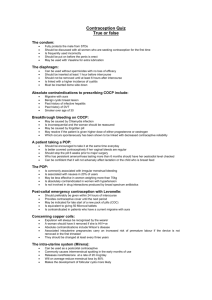

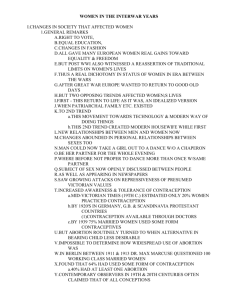
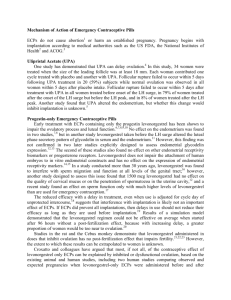
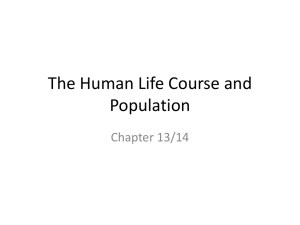
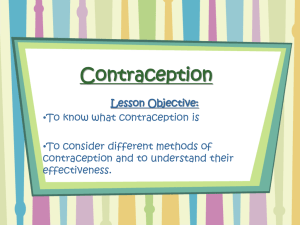
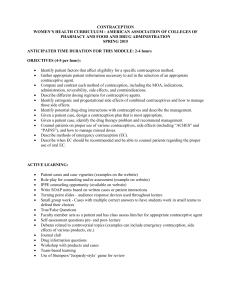
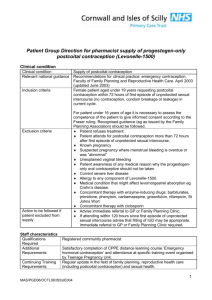
![view Unit 14: Emergency Contraceptive Pills [PDF 319KB]](http://s3.studylib.net/store/data/008439478_1-6df94ca90794562e31dfc68f6a601d55-300x300.png)